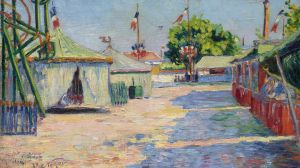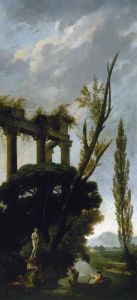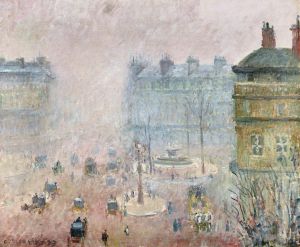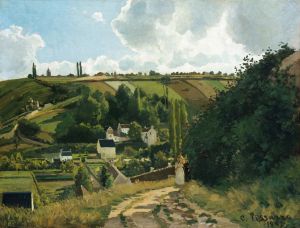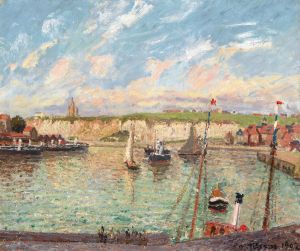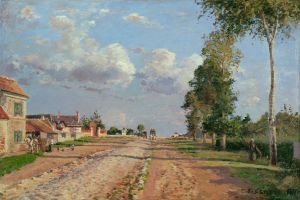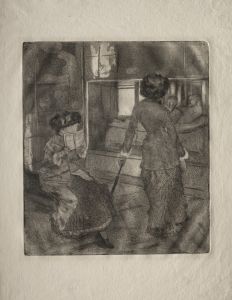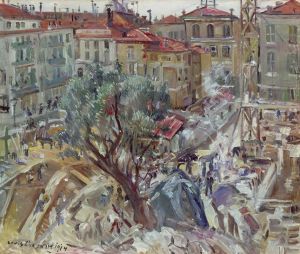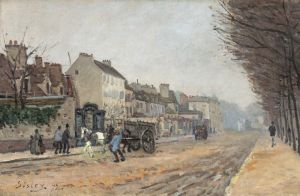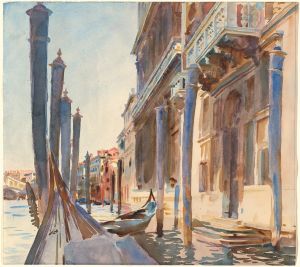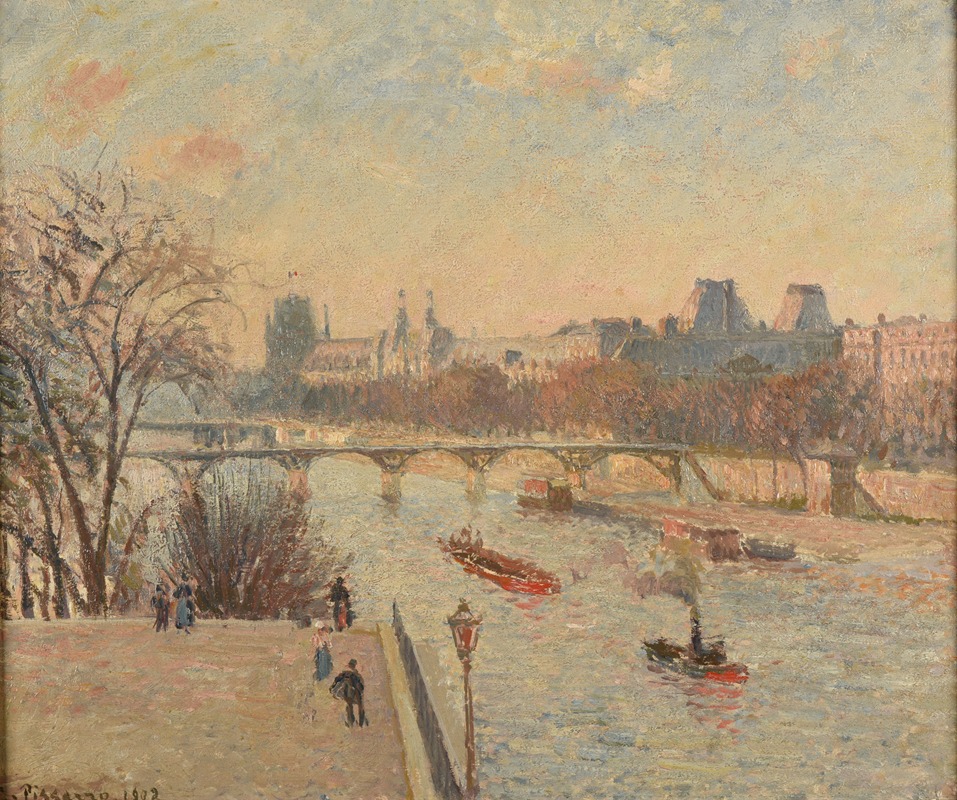
Le Louvre
A hand-painted replica of Camille Pissarro’s masterpiece Le Louvre, meticulously crafted by professional artists to capture the true essence of the original. Each piece is created with museum-quality canvas and rare mineral pigments, carefully painted by experienced artists with delicate brushstrokes and rich, layered colors to perfectly recreate the texture of the original artwork. Unlike machine-printed reproductions, this hand-painted version brings the painting to life, infused with the artist’s emotions and skill in every stroke. Whether for personal collection or home decoration, it instantly elevates the artistic atmosphere of any space.
"Le Louvre" is a painting created by the Danish-French Impressionist artist Camille Pissarro. Pissarro, born on July 10, 1830, in the Danish West Indies, is known for his significant contributions to the Impressionist movement and his influence on both his contemporaries and later generations of artists.
The painting "Le Louvre" depicts the famous Louvre Museum in Paris, one of the most renowned art museums in the world. Pissarro painted this work in 1901, during the later years of his career. This period was marked by his exploration of urban scenes, particularly in Paris, where he captured the bustling life and architectural beauty of the city.
In "Le Louvre," Pissarro employs his characteristic Impressionist style, which is evident in his use of light, color, and brushwork. The painting showcases the Louvre's grand architecture, with its classical facades and the iconic glass pyramid entrance, which was a relatively recent addition at the time. Pissarro's technique involves short, quick brushstrokes that create a sense of movement and vibrancy, capturing the dynamic atmosphere of the scene.
The composition of the painting is carefully structured, with the Louvre positioned prominently in the background, while the foreground features the lively activity of people and carriages. This juxtaposition of the static, monumental architecture with the fluid, ever-changing human activity is a hallmark of Pissarro's urban scenes. The artist's use of light is particularly noteworthy, as he captures the play of sunlight on the building's surfaces and the reflections on the glass pyramid.
Pissarro's choice of subject matter in "Le Louvre" reflects his deep appreciation for the cultural and historical significance of the museum. The Louvre, originally a royal palace, was transformed into a public museum during the French Revolution and has since become a symbol of art and culture. By painting this iconic landmark, Pissarro not only pays homage to the museum but also situates his work within the broader context of art history.
Throughout his career, Pissarro was known for his commitment to capturing the essence of modern life, whether in rural or urban settings. His paintings often depict scenes of everyday life, rendered with a keen eye for detail and a sensitivity to the effects of light and atmosphere. "Le Louvre" is a prime example of this approach, as it encapsulates the vibrancy and energy of Paris at the turn of the 20th century.
Camille Pissarro's "Le Louvre" is a testament to his skill as an artist and his ability to convey the beauty and complexity of the world around him. The painting remains an important work within the Impressionist canon and continues to be admired for its artistic and historical significance.





